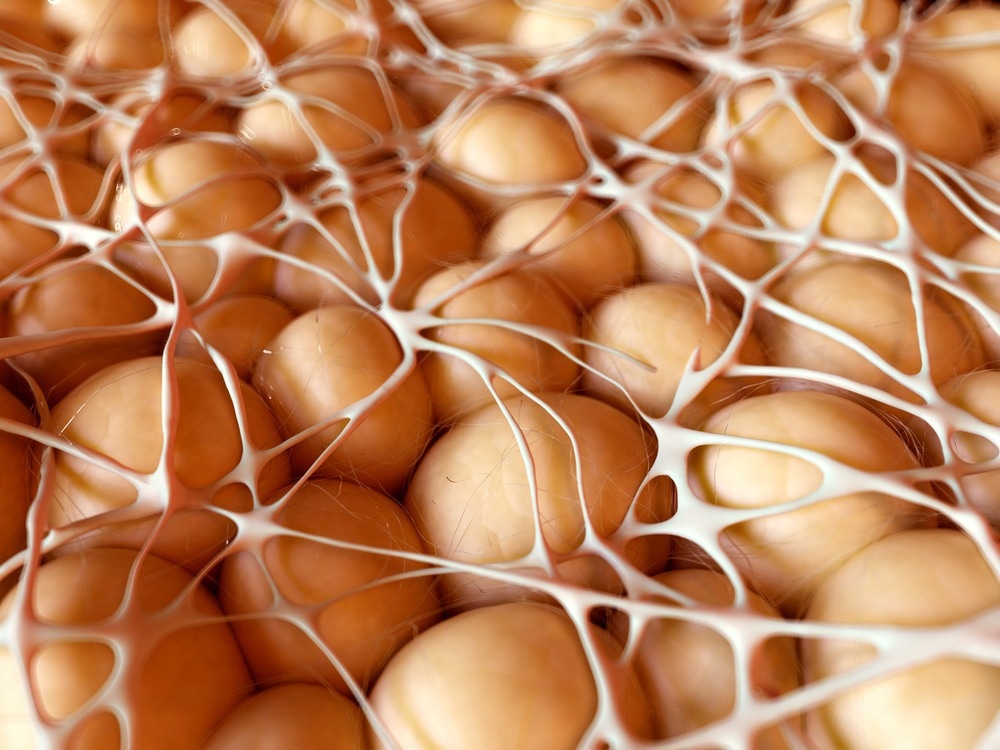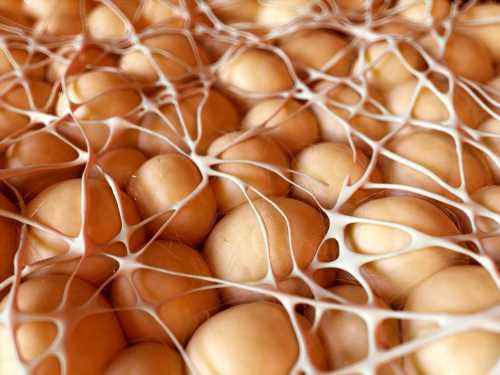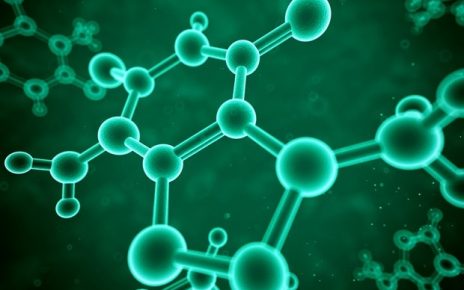With rising rates of obesity and related metabolic diseases being reported worldwide, researchers have struggled to understand the functional status of fatty tissue in the body in relation to overall energy homeostasis. A new Nature study examines the sensory innervation of fat cells within subcutaneous fat deposits, delineating the anatomical and functional effects of interfering with sensory nerves in these tissues.

Study: The Role of Somatosensory Innervation of Adipose Tissues. Image Credit: SciePro / Shutterstock.com
Introduction
In mammals, fat tissue is densely innervated by sympathetic and sensory nerves. Sympathetic nerves carry signals from the sympathetic nervous system through β-adrenergic receptors to regulate fat metabolism and heat production from fat. These nerves are actively involved in the metabolism of both beige and brown fat.
Fat cells also transmit sensory signals that enter the central nervous system through the dorsal root ganglia (DRG) of the spinal cord. Previous studies using the herpes virus have elucidated the pathway of these nerves; however, their functional role remains unclear, as cutting or chemically inactivating these nerves has not produced any significant changes in hamster experiments.
The methods used in the aforementioned studies are now considered to be flawed, as they are unable to selectively target somatosensory fibers. For this reason, the researchers of the current study sought to develop better methods using imaging, molecular, and circuit-selective tools.
The HYBRID visualization tool, for example, uses en bloc fluorescence for large tissues, which is a prerequisite for visualizing the long peripheral axon of the mouse DRG. This approach would allow researchers to visualize the whole sensory nerve from DRG to fat cells.
In addition to this tool, the researchers of the current study also injected a recombinant adeno-associated virus (AAV) expressing a fluorescent protein into individual DRGs at the thoracolumbar level, subsequently leaving out the sympathetic ganglia through delicate microsurgery. This would display all fibers projecting from the two selected sensory ganglia.
In the current study, the researchers utilized the white adipose tissue (WAT) pad in the groin, which consists of metabolically active beige fat, as it has known important functions in mouse physiology.
Study findings
Using HYBRID and light-sheet imaging, the whole projection of the DRG neuron from the cell body to the groin fat pad was observed to be 1.2 cm long. This demonstrated the direct innervation of the fat pad by thoracolumbar DRGs.
The researchers eliminated any confusion between the sensory fibers to the groin skin and those to the fat pad by using dual-color labeling with retrograde cholera toxin subunit B (CTB). The fat sensory fibers were of two types, with one forming larger bundles traveling along the blood vessels to the tissue and the other parenchymal type that exhibited sensory nerve terminations near the fat cells.
Almost 40% of parenchymal fibers were positive for tyrosine hydroxylase (TH), which was previously considered a selective marker for sympathetic fibers. This observation indicated the possibility of errors in previous studies that depended on TH detection to identify sympathetic innervation of fat tissues.
Functional roles
Genetics & Genomics eBook

Compilation of the top interviews, articles, and news in the last year.
Download a copy today
Since sensory fibers use several different neurotransmitters, the researchers utilized genetic engineering to study specific neurons with a focus on their projections. To this end, AAV9 was used because it is both safer and better for elucidating functional changes over the long term, rather than pseudorabies and herpes simplex viruses, both of which are toxic.
This approach is otherwise known as retrograde vector optimized for organ tracing (ROOT). The superiority of this approach is due to its higher retrograde efficiency and the lower incidence of off-target expression in opposite-side DRGs or the liver. Using ROOT, the researchers ablated only sensory nerves in the fat pad, which subsequently led to a 40% reduction in fat-projecting neurons in treated DRGs.
Sensory nerve endings in the skin supplied by fibers traveling with those from the fat pad remained intact. This confirmed that the scientists had achieved a specific loss-of-function model for fat-innervating somatosensory fibers.
Genetic studies showed that somatosensory ablation led to increased thermogenesis in the fat pad, as well as de novo lipogenesis that was similar to the levels found in beige or brown fat. This is an unusual combination of lipid oxidation and lipogenesis, which makes heat production possible, even under cold conditions or following β-adrenergic signaling.
The observed thermogenesis was mediated by higher hormone-sensitive lipase (HSL) activity, with more multilocular beige adipocytes on the ablated side.
The loss of sympathetic innervation in these animals reduced this response. Thus, sympathetic function is required for the gene response to sensory innervation.
With double ablation, the fat mass on the ablated side increased, which is unlike the shrinkage that usually occurs as thermogenesis increases. This indicates that sensory fibers are also involved in coordinating lipogenesis and thermogenesis.
When fat pads on both sides were deprived of their sensory innervation, the animals maintained stable body weight, normal food intake, and expected responses to temperature. No apparent changes in the sympathetic tone were observed.
The greatest change was in core body temperature, which increased and, as a result, correlated with higher thermogenesis. At 22 °C, the temperature stabilized, thus indicating that central thermostat mechanisms remained intact.
When tested with a high-fat diet, ablated mice exhibited much better glucose tolerance than controls; however, their body weight slightly changed. This change supports the beiging of white fat in response to sensory ablation of adipose tissue, with a protective effect on glucose metabolism.
Implications
The current study adds novel information on adipose tissue regulation to the available knowledge. Moreover, the study findings demonstrate that, in addition to the slow generalized signaling from fat cells through adipocyte hormones, fat tissue also sends sensory signals through somatosensory nerves to the brain. This indicates the potential for rapid sensing of changes in specific locations of body fat deposits.
The study findings also demonstrate that DRGs inhibit local sympathetic tone in adipose tissue, like the vagal baroreceptor-mediated regulation of blood pressure. This provides new insights into interoception, which is the process by which the body maintains the multiplicity of internal processes and changes occurring every instant.
The mechanisms linking sensory and sympathetic signaling remain unknown. More research will be needed to identify the functions of the different DRG subtypes innervating adipose tissue, as well as the nature of the signal itself.
- Wang, Y., Leung, V. H., Zhang, Y., et al. (2022). The Role of Somatosensory Innervation of Adipose Tissues. Nature. doi:10.1038/s41586-022-05137-7.
Posted in: Medical Science News | Medical Research News | Disease/Infection News
Tags: Adipocytes, Adipose, Blood, Blood Pressure, Blood Vessels, Brain, Brown Fat, Cell, Central Nervous System, Cholera, Cold, Diet, Fluorescence, Fluorescent Protein, Food, Gene, Genetic, Genetic Engineering, Glucose, Glucose Metabolism, heat, Herpes, Herpes Simplex, Hormone, Imaging, Lipase, Lipogenesis, Liver, Metabolism, Nerve, Nerve activity, Nervous System, Neuron, Neurons, Obesity, Physiology, Protein, Research, Skin, Toxin, Tyrosine, Virus

Written by
Dr. Liji Thomas
Dr. Liji Thomas is an OB-GYN, who graduated from the Government Medical College, University of Calicut, Kerala, in 2001. Liji practiced as a full-time consultant in obstetrics/gynecology in a private hospital for a few years following her graduation. She has counseled hundreds of patients facing issues from pregnancy-related problems and infertility, and has been in charge of over 2,000 deliveries, striving always to achieve a normal delivery rather than operative.
Source: Read Full Article



